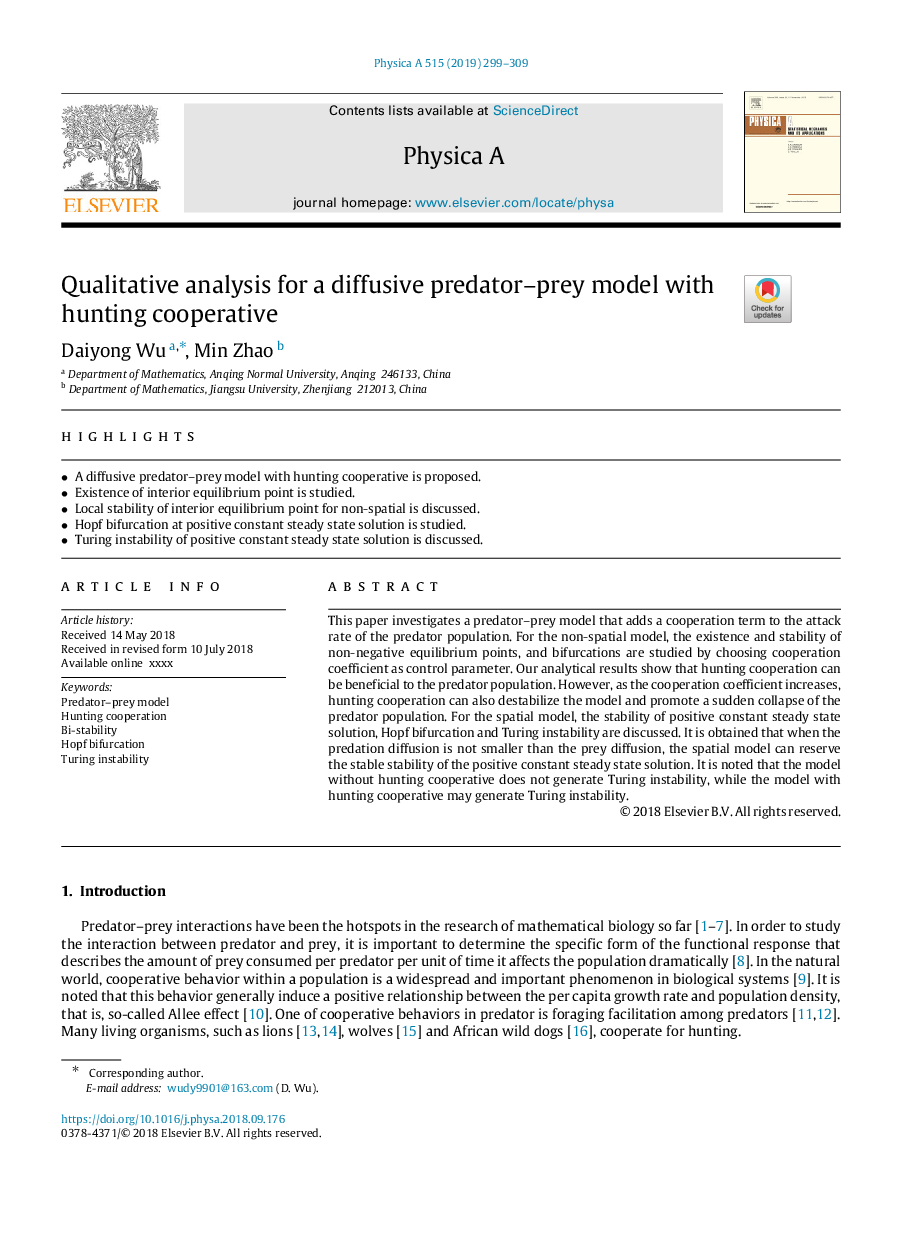| Article ID | Journal | Published Year | Pages | File Type |
|---|---|---|---|---|
| 11011972 | Physica A: Statistical Mechanics and its Applications | 2019 | 11 Pages |
Abstract
This paper investigates a predator-prey model that adds a cooperation term to the attack rate of the predator population. For the non-spatial model, the existence and stability of non-negative equilibrium points, and bifurcations are studied by choosing cooperation coefficient as control parameter. Our analytical results show that hunting cooperation can be beneficial to the predator population. However, as the cooperation coefficient increases, hunting cooperation can also destabilize the model and promote a sudden collapse of the predator population. For the spatial model, the stability of positive constant steady state solution, Hopf bifurcation and Turing instability are discussed. It is obtained that when the predation diffusion is not smaller than the prey diffusion, the spatial model can reserve the stable stability of the positive constant steady state solution. It is noted that the model without hunting cooperative does not generate Turing instability, while the model with hunting cooperative may generate Turing instability.
Related Topics
Physical Sciences and Engineering
Mathematics
Mathematical Physics
Authors
Daiyong Wu, Min Zhao,
